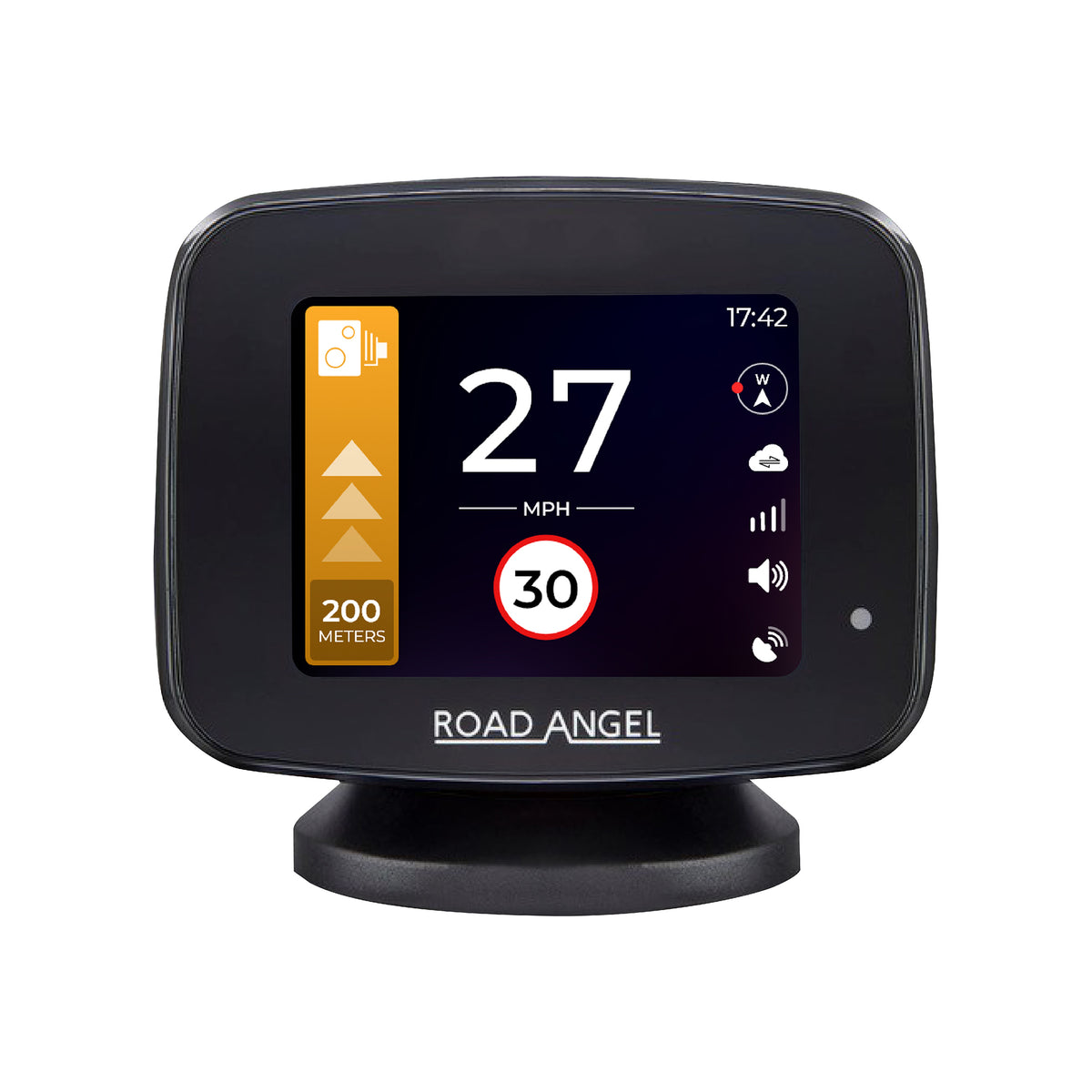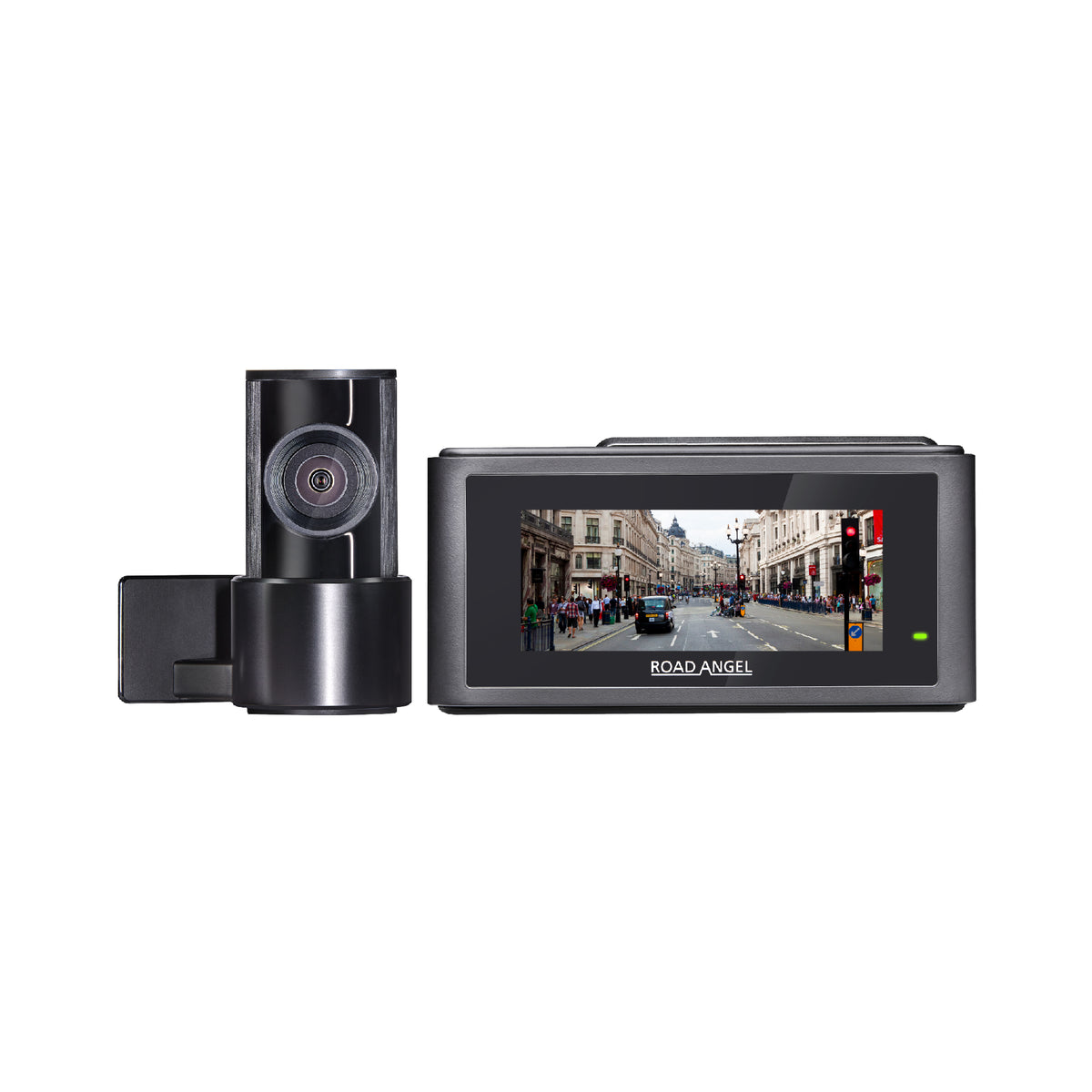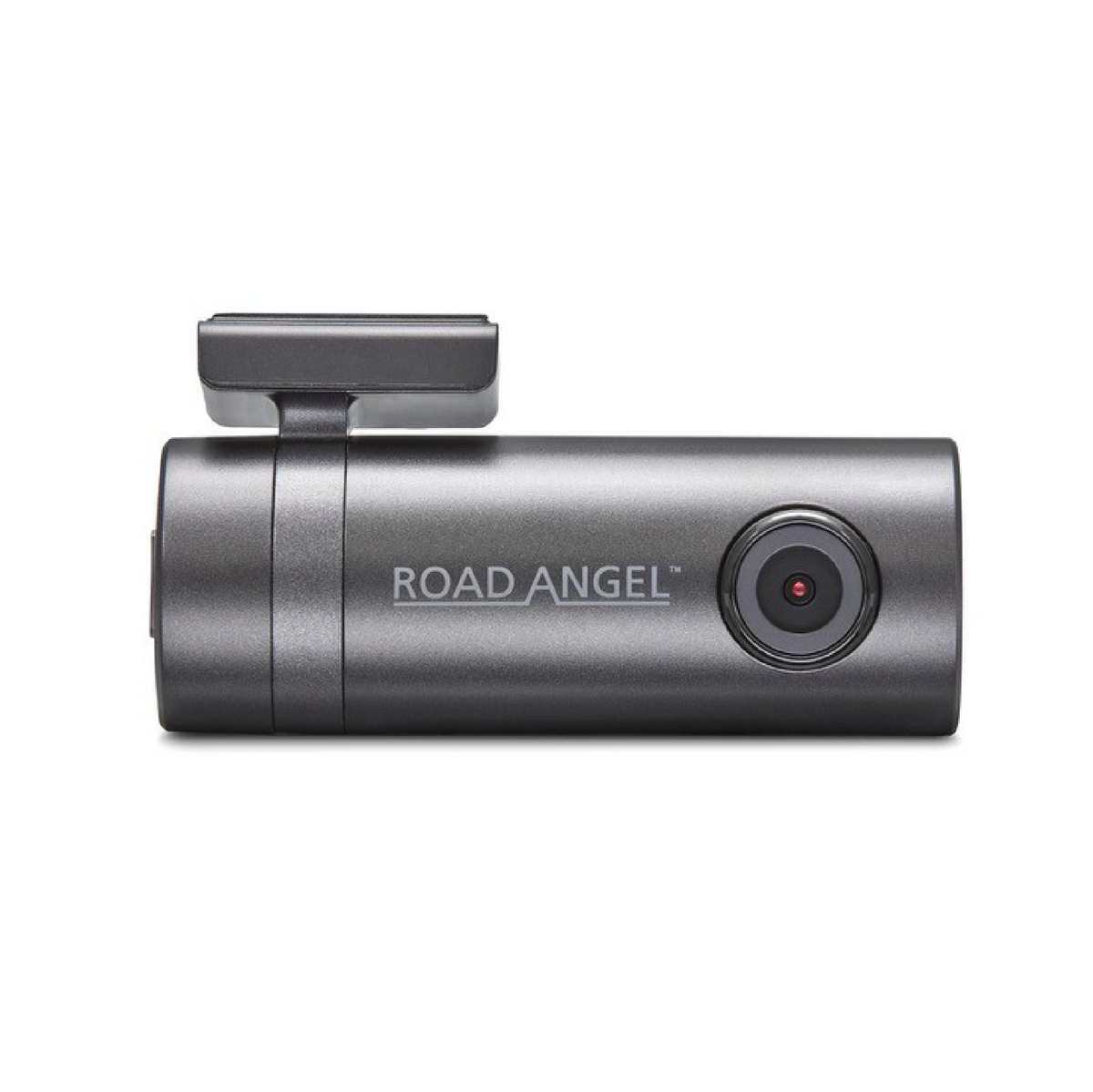Car insurance is more than a legal requirement; it's a vital shield for drivers. From city streets to country lanes, every drive weaves into a tapestry where accidents and theft can strike. Insurance stands as a must-have defence against financial chaos. Welcome to your complete guide to car insurance.
Car insurance covers the financial cost of unexpected events involving your vehicle. It provides peace of mind, protecting you from hefty expenses due to accidents. In the UK, it's not just a safety net, but a legal requirement under the Road Traffic Act.

The landscape of car insurance in the UK is characterised by three primary types of coverage: Third-Party Only, Third-Party Fire and Theft, and Comprehensive. Each type offers different levels of protection, from the basic legal minimum that covers damage to others (Third-Party Only) to the more extensive coverage that also protects your own vehicle (Comprehensive). This range ensures that drivers can select a level of insurance that not only meets legal requirements but also aligns with their personal needs and circumstances.
Wading your way through the car insurance market can seem daunting with its myriad of terms, conditions, and coverage options. However, understanding the basics of how car insurance works in the UK, the types of coverage available, and the factors that influence insurance premiums can empower you to make informed decisions. This guide aims to demystify car insurance, providing you with the knowledge to choose the right coverage, understand your policy, and navigate the claims process with confidence.
In the following sections, we will delve deeper into the intricacies of car insurance policies, the nuances of different types of coverage, and practical tips for managing your insurance costs. Whether you're a seasoned driver or newly behind the wheel, this guide will equip you with the insights needed to navigate the UK's car insurance landscape effectively.
Contents
- The Importance of Car Insurance
- Types of Car Insurance Coverage
- Understand Car Insurance Policies
- Factors Influencing Car Insurance Premiums & How They're Calculated
- About No-Claims Bonus (NCB)
- Optional Extras & Add-ons
- How to Reduce Your Car Insurance Premiums
- The Insurance Buying Process
- Renewing Your Policy or Switching Insurers?
- Step-by-step Guide on What to do in the Event of an Accident
- Debunking Car Insurance Myths
- Car Insurance FAQs
- Our Conclusion on Car Insurance

The Importance of Car Insurance
The importance of car insurance extends far beyond simply meeting legal obligations. It plays a critical role in the financial and emotional well-being of drivers, passengers, and the broader public. Here's why car insurance is indispensable:
Financial Protection
Car insurance is fundamentally about financial security. Accidents can incur significant costs, from vehicle repairs to medical expenses for any injuries sustained. Without insurance, these costs fall squarely on the shoulders of the involved parties, potentially leading to financial distress. Insurance ensures that in the event of an accident, the financial implications are managed, allowing individuals to recover without the added burden of unmanageable expenses.
Legal Requirement
In the UK, driving without at least Third-Party Only insurance is illegal and can result in severe penalties, including fines, disqualification from driving, and even vehicle seizure. This legal mandate underscores the government's commitment to protecting all road users from the financial aftermath of accidents. By complying with this requirement, drivers contribute to a safer, more responsible driving environment.
Protection Against Liability
Car insurance often includes liability coverage, which protects you if you're held responsible for an accident that causes injury to others or damage to their property. This aspect of insurance is crucial, as it safeguards you from potential legal actions and claims that could arise from such incidents.
Peace of Mind
Knowing you have car insurance provides peace of mind every time you're on the road. This reassurance allows you to focus on safe driving without the constant worry of how an accident could impact your financial future. It also offers comfort to passengers, knowing that they're covered in the event of an unforeseen incident.
Coverage for Theft and Vandalism
Comprehensive car insurance policies cover not only accidents but also other risks like theft, vandalism, and damage from natural disasters. This broader coverage ensures that your investment in your vehicle is protected against a wide array of potential losses, providing an added layer of security.
Facilitates Car Financing
Most financial institutions require comprehensive car insurance as a condition for auto loans. This requirement protects the lender's investment in your vehicle while ensuring that you can afford repairs or replacement in the event of an incident, thereby maintaining the vehicle's value and your ability to repay the loan.
Encourages Responsible Driving
The prospect of increased premiums due to accidents or traffic violations incentivises drivers to adopt safer driving habits. This indirect benefit of car insurance contributes to overall road safety, reducing the likelihood of accidents and their associated costs.

Types of Car Insurance Coverage
In the UK, car insurance is categorised into three main types of coverage, each offering different levels of protection. Understanding these can help you choose a policy that best suits your needs and ensures you're adequately covered.
Third-Party Only (TPO)
Third-Party Only insurance is the minimum level of coverage required by UK law under the Road Traffic Act. This type of insurance covers:
- Damage to Other Vehicles: If you're at fault in an accident, TPO covers the cost of repairing damage to other people's vehicles or property.
- Injury to Others: It also covers medical costs, compensation for injuries, and potentially legal costs for other people involved in the accident (not including you or your passengers if you’re at fault).
TPO does not cover any damage to your own vehicle or personal injuries you might sustain in an accident for which you are at fault.
Third-Party, Fire and Theft (TPFT)
Third-Party, Fire and Theft insurance includes everything covered by TPO and adds protection for:
- Fire Damage: If your car is damaged due to fire, whether accidental or due to arson, TPFT policies will cover the cost of repairs or replacement.
- Theft: This coverage also includes theft of the vehicle itself or damage caused by an attempted theft, such as broken windows or locks.
TPFT is a middle-ground option that adds some protection for your own vehicle on top of the basic third-party coverage, without the full expense of comprehensive insurance.
Comprehensive
Comprehensive insurance offers the most extensive coverage, including:
- Third-Party Coverage: Like TPO, it covers damages to other vehicles and injuries to other people in accidents where you're at fault.
- Fire and Theft: As with TPFT, comprehensive policies cover your vehicle against fire damage and theft.
- Damage to Your Vehicle: Unlike TPO and TPFT, comprehensive insurance covers damages to your own vehicle in accidents, even if you're at fault.
- Personal Injury: It often includes cover for injuries you might sustain in an accident, regardless of who's at fault.
- Accidental Damage: Comprehensive policies usually cover accidental damage to your car, such as dents and scratches, even outside of collision scenarios.
- Vandalism: Damage caused by vandalism is typically covered under comprehensive insurance.
Comprehensive insurance is recommended for those seeking maximum protection for their vehicle and themselves. While it's the most expensive type of car insurance, it offers peace of mind knowing you're covered in almost any eventuality.
Specialty Insurance
Beyond these standard types, there are specialty insurances for unique situations, such as:
- Classic Cars: Special policies designed for vintage or classic cars, taking into account their value and limited use.
- Modified Vehicles: For cars with significant modifications, specialised insurance can cover the additional value and risks associated with the modifications.

Choosing the right type of car insurance involves assessing your specific needs, the level of risk you're comfortable with, and the value of your vehicle. It's crucial to balance the cost of premiums with the level of coverage you require to ensure you're adequately protected without overpaying for unnecessary features.
Understanding Car Insurance Policies
Understanding the intricacies of car insurance policies can be complex, but learning the key components can demystify the process and empower you to make informed decisions about your coverage.
Here's a breakdown of what you need to know:
Policy Schedule
The policy schedule is a crucial document that outlines the specifics of your insurance agreement. It includes:
- Policyholder Information: Details about you, the insured.
- Vehicle Details: Information about the car being insured, including make, model, and registration number.
- Cover Start and End Dates: The period during which the insurance coverage is effective.
- Type of Cover: Specifies whether your policy is Third-Party Only, Third-Party Fire and Theft, or Comprehensive.
- Policy Limits: The maximum amounts the insurer will pay out in the event of various types of claims.
- Excess Details: The compulsory and voluntary excess amounts you've agreed to, which impact how much you'll pay out of pocket for each claim.
Certificate of Motor Insurance
This document serves as proof that you have the insurance required by law. It's essential to keep it accessible, especially when driving, as you may need to present it:
- During traffic stops to prove you're legally insured.
- Following an accident to exchange insurance details with other parties involved.
- When taxing your vehicle, as proof of insurance is often required.
Policy Wording/Booklet
The policy wording or booklet provides an in-depth explanation of your insurance coverage, including:
- Coverage Details: Clarifies what is and isn't covered by your policy, including any specific conditions or exclusions.
- Claims Process: Outlines how to file a claim, what documentation is needed, and any deadlines for submitting a claim.
- Policy Terms and Conditions: Detailed rules governing the insurance agreement, including your responsibilities as the policyholder and those of the insurer.
Understanding Key Terms
Familiarising yourself with key insurance terms is vital for understanding your policy:
- Premium: The amount you pay for your insurance coverage, either as a lump sum or in instalments.
- Excess: The amount you must pay towards any claim you make. A higher voluntary excess can lower your premium, but it means you'll pay more out-of-pocket for each claim.
- No-Claims Bonus (NCB): A discount on your premium that increases for each year you don't make a claim, reflecting your lower risk as a driver.
- Indemnity: The principle that insurance should restore you to the financial position you were in before the loss or damage occurred, without allowing for profit.
The Significance of Insurance Policy Excess
The policy excess is a critical element of your car insurance, as it directly affects the cost of your policy and your financial responsibility in the event of a claim. There are two main types of excess:
- Compulsory Excess: Set by the insurer, this is a fixed amount you're required to pay towards any claim.
- Voluntary Excess: An additional amount you choose to pay on top of the compulsory excess, which can lower your premium but increases your out-of-pocket cost when making a claim.
Understanding your car insurance policy's components, terms, and conditions enables you to choose coverage that meets your needs and manage potential claims more effectively. Always read your policy documents thoroughly and ask your insurer for clarification on any points you find confusing.

Factors Influencing Car Insurance Premiums & How They're Calculated
Insurance premiums are not arbitrarily set; they're carefully calculated based on a variety of factors that help insurers assess the level of risk associated with insuring you and your vehicle. Understanding these factors can provide insights into how your premiums are determined and what you might do to influence them.
Factors Influencing Insurance Premiums
-
Age and Driving Experience: Younger drivers, particularly those under 25, typically face higher premiums due to their statistically higher risk of being involved in accidents. Conversely, older drivers with more experience tend to enjoy lower rates, reflecting their reduced risk profile.
-
Driving History and Claims Record: A history of accidents, traffic violations, or previous claims can indicate a higher risk to insurers, leading to increased premiums. A clean driving record, on the other hand, can qualify you for lower rates and no-claims bonuses.
-
Vehicle Type and Value: The make, model, and age of your vehicle significantly impact your premiums. High-performance cars, luxury vehicles, and those with a high theft rate or expensive repair costs generally attract higher premiums.
-
Vehicle Usage: How you use your vehicle affects your insurance costs. Higher annual mileage can lead to higher premiums due to the increased risk of being involved in an accident. The purpose of your driving, whether for personal or business use, also plays a role.
-
Location: Your geographical location can influence your insurance costs. Urban areas with higher traffic density and theft rates often result in higher premiums compared to rural areas.
-
Parking and Security: Vehicles parked on the street overnight may be considered at higher risk than those kept in a secure garage, affecting premiums. Additionally, cars equipped with security features like alarms and immobilisers can attract lower rates.
-
Coverage Type: Choosing comprehensive cover typically costs more than basic third-party or third-party, fire, and theft policies due to the broader protection offered.
-
Policy Excess: Opting for a higher voluntary excess can reduce your premium, as it decreases the insurer's potential payout in the event of a claim.
How Insurers Calculate Premiums
Insurers use complex algorithms and actuarial data to calculate premiums, considering the factors mentioned above. This process involves:
- Risk Assessment: Insurers evaluate the information you provide, along with historical data, to determine the likelihood of you making a claim.
- Pricing Models: Based on the risk assessment, insurers apply pricing models that factor in their costs, desired profit margins, and competitive pricing in the market.
- Individual Circumstances: Each policyholder's unique circumstances are considered, allowing insurers to tailor premiums to reflect individual risk levels.
Understanding these factors and how they influence insurance premiums can empower you to make informed decisions about your coverage and potentially find ways to reduce your costs. For example, improving your driving record, choosing a car that's cheaper to insure, increasing your excess, or reducing your annual mileage can all contribute to lower premiums.

About No-Claims Bonus (NCB)
A No-Claims Bonus (NCB), or No-Claims Discount, is a reward given by insurance companies to policyholders who don't make any insurance claims over a certain period. It's a crucial feature of car insurance in the UK, offering a tangible incentive for safe driving.
Explanation of NCB and Its Benefits
The NCB is essentially a discount on your insurance premium that accumulates for each year you go without making a claim. The concept is straightforward: the longer you go without claiming, the less of a risk you appear to the insurer, and thus, you're rewarded with a reduced premium. The discount can start from as little as 5% after one year and can climb to as much as 75% after five years or more of claim-free driving.
The benefits of accumulating an NCB include:
- Reduced Premiums: The most direct benefit is the significant reduction in your insurance costs over time.
- Transferability: If you switch insurers, you can usually transfer your NCB to your new policy, retaining your discount.
- Incentive for Safe Driving: The potential for lower premiums encourages safer driving habits.
How to Protect Your NCB
While accumulating an NCB can lead to substantial savings, a single claim can set you back, often reducing your discount drastically. However, you can take measures to protect your NCB:
-
NCB Protection Cover: Many insurers offer an NCB Protection add-on, allowing you to make a certain number of claims within a policy year without affecting your bonus. It's important to note that while this protects your discount, it doesn't necessarily prevent your overall premium from increasing after a claim, as your underlying risk may be reassessed.
-
Consider Paying Small Claims Out-of-Pocket: For minor damages, it might be financially wiser to cover the repair costs yourself rather than making a claim, preserving your NCB and keeping your future premiums lower.
-
Drive Safely: The most effective way to protect your NCB is to maintain safe driving practices, reducing the likelihood of accidents and the need to make a claim.
-
Review Your Policy Regularly: Ensure you understand the terms of your NCB protection and the number of claims allowed. Regularly reviewing your policy helps you stay informed about your coverage and any changes that may affect your NCB.
Optional Extras & Add-ons
When purchasing car insurance, you'll often have the option to enhance your policy with various extras and add-ons. These can provide additional peace of mind and protection, but it's important to assess whether they offer value for your specific needs.
Here's an overview of common optional extras and add-ons in car insurance policies:
Breakdown Cover
Breakdown cover offers assistance if your car breaks down, helping you get back on the road quickly. It can include services like roadside assistance, recovery to a chosen location, and even onward travel or overnight accommodation if your car can't be fixed immediately. Considering the unpredictable nature of vehicle breakdowns, this add-on can be invaluable, especially for those who rely heavily on their vehicle or travel frequently.
Courtesy Car Provision
A courtesy car provision ensures you have access to a temporary vehicle while your car is being repaired due to an insured incident. This add-on is particularly useful for individuals who depend on their car daily, such as for commuting or school runs, ensuring minimal disruption to your routine.
Legal Expenses Cover
Legal expenses cover, also known as Motor Legal Protection, helps cover the cost of legal proceedings if you need to pursue or defend a claim following a road incident. This can include recovering uninsured losses, such as personal injury compensation or excess payments, making it a valuable addition for those seeking extra legal protection.
Personal Injury Cover
While some level of personal injury cover may be included in comprehensive policies, additional personal injury cover can provide a higher level of protection. This add-on can offer more substantial compensation for serious injuries or death resulting from a car accident, providing added financial security for you and your family.
Windscreen Cover
Windscreen cover provides for the repair or replacement of your car's windscreen, windows, or sunroof if they're damaged. Given that such damages can occur easily and repairs can be costly, this add-on can save you from unexpected expenses, and often, claims under this cover won't affect your no-claims bonus.
Key Cover
Key cover offers protection if your car keys are lost, stolen, or damaged, covering the cost of replacement keys, locks, and, in some cases, reprogramming of electronic key fobs. With the high cost of replacing modern car keys, this add-on can be particularly worthwhile.
Protected No-Claims Bonus
This add-on allows you to retain your no-claims bonus even if you have to make a claim, preserving your discount on future premiums. It's especially beneficial for drivers who have accumulated several years of no-claims bonuses and want to safeguard their discounts.
Gadget Cover
For those who keep valuable gadgets in their car, like smartphones, laptops, or tablets, gadget cover can insure these items against theft, loss, or damage while they're in the vehicle.
When considering these add-ons, weigh the cost against the potential benefits and your individual circumstances. It's also wise to shop around, as you might find some of these covers cheaper if bought separately rather than as part of your car insurance policy.

How to Reduce Your Car Insurance Premiums
Reducing your car insurance premiums can make a significant difference to your household budget. Here are some practical tips and strategies to help you lower the cost of your car insurance in the UK:
Shop Around and Compare Quotes
Don't automatically renew your policy with your current insurer without first comparing prices. Use comparison websites to get a broad range of quotes. Insurers often offer the best deals to new customers, so shopping around each year can lead to substantial savings.
Increase Your Voluntary Excess
Agreeing to a higher voluntary excess—the amount you're willing to pay upfront in the event of a claim—can significantly reduce your premium. However, ensure it's an amount you can afford to pay if needed.
Build and Protect Your No-Claims Bonus (NCB)
A no-claims bonus can dramatically reduce your premiums over time. Protecting your NCB with an add-on can be worthwhile, as it maintains your discount even if you have to make a claim. However, weigh the cost of this protection against the potential savings.
Consider Telematics Insurance
Also known as black box insurance, telematics policies use a device or app to monitor your driving habits, such as speed, acceleration, and braking. Safe driving can lead to lower premiums, making this a particularly attractive option for young or inexperienced drivers.
Improve Vehicle Security
Adding security features like an alarm, immobiliser, or tracking device can reduce the risk of theft, potentially lowering your premiums. Parking your car in a garage or a secure, off-road location can also help.
Drive a Less Expensive Car
The make, model, and engine size of your car can significantly impact your insurance costs. Opting for a car in a lower insurance group with smaller engine size can lead to cheaper premiums.
Limit Your Mileage
Lower annual mileage means less time on the road and, consequently, a lower risk of accidents. If you can limit your mileage, inform your insurer, as this could reduce your premium.
Pay Annually Instead of Monthly
Paying for your insurance in one annual lump sum rather than monthly installments can avoid interest charges and additional fees, reducing the overall cost.
Use Named Drivers Wisely
Adding an experienced named driver to your policy can sometimes reduce premiums, as the risk is perceived to be spread across multiple drivers. However, ensure that the main driver is correctly listed to avoid "fronting," which is illegal.
Opt for a Multi-Car Policy
If there are multiple cars in your household, a multi-car policy can offer discounts for insuring them all with the same provider.
Maintain a Good Credit Score
In some cases, your credit score can influence your insurance premiums, with a better score potentially leading to lower rates.
Re-evaluate Your Coverage Needs
Review your policy features and remove any unnecessary extras. If your car's value has decreased significantly, consider whether comprehensive cover is still cost-effective.
By implementing these cost-saving strategies, you can make your car insurance more affordable without sacrificing essential coverage. Always ensure that you're still adequately covered for your needs, as the cheapest policy isn't necessarily the best.
The Car Insurance Buying Process
Navigating the insurance buying process effectively can ensure you secure the best possible coverage at the most competitive rate.
Here’s a step-by-step breakdown of buying car insurance:
Step 1: Assess Your Insurance Needs
- Evaluate the level of coverage you require based on your vehicle's value, usage, and your personal circumstances.
- Decide between Third-Party Only, Third-Party Fire and Theft, and Comprehensive coverage based on your needs and budget.
Step 2: Gather Necessary Information
- Compile details about your vehicle, including make, model, year, and any modifications.
- Have your driving license, vehicle registration number, and any relevant personal details at hand, including your driving history and any previous claims.
Step 3: Use Comparison Sites
- Utilise reputable car insurance comparison websites to get a broad view of the available options and market rates. Sites like MoneySuperMarket, Compare the Market, and GoCompare can provide a variety of quotes from different insurers.
Step 4: Check Direct Insurers
- Some insurers, like Direct Line, do not appear on comparison sites, so it's worth getting quotes directly from these companies as well.
Step 5: Consider Telematics Policies
- If you're a young or inexperienced driver, explore telematics (black box) policies, which could offer lower rates based on monitored driving behavior.
Step 6: Review Quotes and Coverage Details
- Carefully compare the quotes, paying attention not just to the price but also to the level of coverage, excess amounts, and any included extras or exclusions.
Step 7: Check Reviews and Customer Service Ratings
- Research the insurers you're considering to assess their customer service and claims handling reputation. Independent review sites and forums can provide valuable insights.
Step 8: Apply for the Policy
- Once you've chosen an insurer, you can usually apply online, over the phone, or in some cases, in person. Ensure all the information you provide is accurate to avoid issues later.
Step 9: Review Your Policy Documents
- Upon receiving your policy documents, review them thoroughly to confirm that all details are correct and the coverage meets your expectations.
Step 10: Consider Additional Coverage
- Decide if you need any optional extras or add-ons, like breakdown cover or legal expenses insurance, and add them to your policy if necessary.
Step 11: Set Up Payments
- Choose whether to pay your premium in full or in monthly installments. Remember, paying annually can often save you money in the long run.
Step 12: Continuous Review and Adjustment
- Keep your insurer informed of any significant changes, like a new address, vehicle modifications, or changes in your driving habits, as these can affect your coverage and premium.
- Annually review your policy and shop around before renewal to ensure you continue to get the best deal.
Renewing Your Policy or Switching Insurers?
When it comes to renewing your car insurance policy or considering a switch to a new insurer, it's essential to approach the process proactively to ensure you continue to get the best coverage at a competitive rate. Here's a guide to help you navigate policy renewal and the decision to switch insurers effectively:
Reviewing Your Current Policy
-
Assess Your Current Coverage: Before your policy is up for renewal, review your existing coverage to determine if it still meets your needs. Consider any changes in your circumstances, such as a different vehicle, changes in driving habits, or additional drivers.
-
Evaluate Your Current Premium: Take note of any premium changes in your renewal notice. Insurers often increase premiums at renewal, even if you haven't made any claims.
-
Check for Loyalty Penalties: Be aware that staying with the same insurer for many years doesn't always guarantee the best rate. In some cases, insurers count on customer inertia to charge higher rates at renewal.
Shopping Around
-
Get New Quotes: Use comparison websites and direct insurer quotes to explore your options. Even if you're satisfied with your current insurer, getting quotes can give you leverage in negotiations or lead you to a better deal elsewhere.
-
Compare Apples to Apples: Ensure you're comparing similar levels of coverage and excess amounts when looking at new quotes. A lower premium from another insurer may come with higher excesses or less coverage.
-
Consider Any Changes in Your Needs: If your circumstances have changed, adjust your coverage accordingly. For instance, if you're driving less, you might qualify for a lower premium based on reduced mileage.
Negotiating with Your Current Insurer
-
Leverage New Quotes: If you've found better rates elsewhere but prefer to stay with your current insurer, contact them to discuss your renewal quote. Present the quotes you've received from competitors as leverage to negotiate a better rate.
-
Discuss Changes in Circumstances: Inform your insurer of any changes that might warrant a lower premium, such as an improved driving record, additional security features on your vehicle, or reduced mileage.
-
Ask About Discounts: Inquire about any additional discounts or loyalty bonuses that you might be eligible for but aren't currently receiving.
Switching Insurers
-
Consider the Full Picture: Beyond the premium, consider factors such as customer service, claims handling reputation, and the ease of doing business with the insurer.
-
Timing: If you decide to switch, timing is crucial. Ensure there's no lapse in coverage between policies. It's often best to align the start date of your new policy with the expiration of your current one.
-
Notify Your Current Insurer: If you choose to switch, inform your current insurer before your policy auto-renews. Some insurers require notice in writing, while others may allow you to cancel over the phone or online.
-
Documentation: Ensure you receive all necessary documents from your new insurer, including your policy booklet and certificate of insurance. Review these documents thoroughly to confirm that all details are correct and that you understand your new policy.
-
No-Claims Bonus (NCB): If you're switching insurers, remember to obtain proof of your no-claims bonus from your current insurer to transfer it to your new policy.
By actively reviewing, shopping around, and negotiating at renewal time, you can ensure that your car insurance continues to meet your needs at the best possible price. Switching insurers can be a straightforward process that might lead to significant savings and better coverage, provided you do your homework and manage the transition smoothly.

Step-by-step Guide on What to do in the Event of an Accident
Experiencing a car accident can be stressful, but knowing the correct steps to take immediately afterward can help manage the situation more effectively. Here’s a step-by-step guide on what to do if you find yourself in a car accident in the UK:
Step 1: Ensure Safety
- Stop the Car: Regardless of the accident's severity, stop your vehicle as soon as it's safe to do so. Failing to stop can result in legal consequences.
- Turn Off Your Engine: To prevent further accidents or fire hazards.
- Turn on Hazard Lights: This alerts other road users to your presence and the potential danger.
Step 2: Check for Injuries
- Assess Yourself and Passengers: Check if anyone in your vehicle is injured.
- Assist Others: If it’s safe, check other involved parties for injuries. Do not move anyone who’s injured unless there’s an immediate danger (e.g., fire).
Step 3: Call Emergency Services
- Contact the Police: If there are injuries, road blockages, or if the other driver fails to stop, you must call the police. In the UK, dial 999 for emergencies.
- Call an Ambulance: If anyone is injured, request medical assistance immediately.
Step 4: Exchange Information
Exchange the following information with the other driver(s) involved:
- Names and contact details
- Car registration numbers
- Insurance company names and policy numbers
- Driver's license numbers
If the other driver is not the vehicle owner, obtain the owner's name and address.
Step 5: Document the Scene
- Take Photos: Use your phone to take pictures of the accident scene, including all vehicles involved, any visible damage, and road conditions.
- Make Notes: Record details like the time, date, weather conditions, and how the accident occurred.
Step 6: Collect Witness Information
Step 7: Report the Accident to Your Insurer
- Notify Your Insurance Company: Contact your insurer as soon as possible, even if you don’t intend to make a claim. Failure to report an accident can violate your policy terms.
- Provide Details: Give your insurer all the information you’ve gathered about the accident.
Step 8: Avoid Admitting Fault
Step 9: Seek Medical Attention
Even if you feel fine, consider seeing a doctor after an accident. Some injuries, like whiplash, may not be immediately apparent.
Step 10: Follow Up
Keep in touch with your insurance company to ensure your claim is processed efficiently. If you've been injured, keep records of medical treatments and expenses incurred.
By following these steps, you can manage the immediate aftermath of a car accident more calmly and effectively, ensuring the safety of everyone involved and facilitating the insurance claim process.
Debunking Car Insurance Myths
Myth 1: Colour Affects Insurance Rates
Debunked: The colour of your car does not directly influence your insurance premiums. Insurers are more interested in the make, model, engine size, and safety features of your vehicle, not its colour, but if the colour is a sought after colour, or a premium colour, then it may be open to more chance of a theft. Factors like your driving history, location, and the type of coverage you choose have a far more significant impact on your rates.Myth 2: Older Drivers Pay More
Debunked: While young drivers typically face higher premiums due to their higher risk profile, older drivers often enjoy lower rates. This is because they're generally considered to be more experienced and less likely to be involved in accidents. However, rates can increase for very elderly drivers, usually those over 70, but this is more nuanced and based on individual circumstances rather than a blanket rule.
Myth 3: Comprehensive Coverage Covers Everything
Debunked: Despite its name, comprehensive insurance doesn't cover 'everything.' While it provides a wide range of protection, including damage to your own car, there are still exclusions. For instance, personal belongings stolen from your vehicle might not be covered unless you've opted for personal possessions or contents cover. Always check the specifics of your policy.
Myth 4: Personal Car Insurance Covers Business Use
Debunked: Standard personal car insurance policies typically do not cover business use of your vehicle. If you use your car for business purposes beyond commuting, like making deliveries or client visits, you may need to extend your coverage or get a separate commercial policy.
Myth 5: All Items in the Car Are Covered
Debunked: Personal items stolen from your car or damaged in an accident are often not covered under a standard car insurance policy. You might need additional personal belongings cover for this, or some items might be covered under your home insurance policy.
Myth 6: Third-Party Coverage Is Always Cheaper
Debunked: It's a common misconception that Third-Party Only insurance is the cheapest option because it offers the least coverage. However, insurers sometimes view those who opt for minimal coverage as higher risk, which can lead to higher premiums. Sometimes, Comprehensive policies can be competitively priced, offering better value.
Myth 7: Your Credit Score Doesn't Affect Your Insurance Rate
Debunked (with a caveat): In many countries, including the US, your credit score can influence your insurance premiums. However, in the UK, insurers are not allowed to use your credit score directly to set premiums. They can only use it to verify your identity and for anti-fraud purposes.
Car Insurance FAQs
What is the minimum car insurance requirement in the UK?
Answer: In the UK, the minimum legal requirement is Third-Party Only (TPO) insurance. This covers damages or injuries you may cause to other people or their property in an accident, but it does not cover damages to your own vehicle.
How is the cost of my car insurance determined?
Answer: Insurance premiums are calculated based on a range of factors including your age, driving experience, driving history, the make and model of your car, where you live, how you use your car, and the type of coverage you choose. Insurers assess these factors to estimate the risk of insuring you and price your policy accordingly.
Can I drive any car with my insurance?
Answer: Not necessarily. While some comprehensive policies offer a feature that allows you to drive other cars, this is not universal and typically only provides Third-Party Only coverage. Always check the specifics of your policy and obtain the car owner's permission.
What is a no-claims bonus (NCB)?
Answer: A no-claims bonus is a discount on your car insurance premium that you earn for every year you go without making a claim. The discount increases with each claim-free year, significantly reducing your premium over time.
How can I reduce my car insurance premiums?
Answer: You can potentially lower your premiums by shopping around for quotes, increasing your voluntary excess, securing your car with anti-theft devices, reducing your annual mileage, and maintaining a clean driving record to build up your no-claims bonus.
What should I do if I'm involved in a car accident?
Answer: If you're involved in an accident, ensure everyone's safety, call emergency services if needed, exchange information with the other driver(s), take photos of the scene, and report the incident to your insurer as soon as possible.
Does my car insurance cover me abroad?
Answer: Many policies offer limited coverage for driving in the EU and other countries, but this is often restricted to the minimum legal requirement in the country you're visiting, which might not be as comprehensive as your UK coverage. Check your policy and consider additional coverage if needed.
What is an excess in car insurance?
Answer: The excess is the amount you agree to pay towards the cost of a claim. There are two types: compulsory (set by the insurer) and voluntary (an additional amount you opt to pay, which can lower your premium).
Can I cancel my car insurance policy at any time?
Answer: Yes, you can usually cancel your policy at any time, but you might incur a cancellation fee. If you cancel shortly after taking out the policy or partway through, you may be entitled to a refund of part of your premium, though this often excludes any time you've already been covered for.
What happens if I drive without insurance?
Answer: Driving without insurance is illegal in the UK and can result in severe penalties including fines, points on your license, and even the seizure of your vehicle. Always ensure you have at least the minimum required insurance before driving.
Our Conclusion on Car Insurance
Exploring the world of car insurance in the UK can seem daunting, given its complexities and the myriad of options available. However, armed with the right information and a clear understanding of your own needs, finding the right coverage becomes a far less intimidating task. From understanding the basic types of coverage to debunking common myths and addressing frequently asked questions, this guide aims to equip you with the knowledge needed to make informed decisions about your car insurance.
Remember, the goal isn't just to find the cheapest policy, but one that provides adequate protection tailored to your specific circumstances. Whether you're a new driver seeking your first policy or an experienced motorist looking to switch insurers, the key is to assess your needs, shop around, and not be afraid to ask questions. Insurance is, after all, about peace of mind, and the right policy is one that offers you just that, without breaking the bank.
As you move forward, keep in mind the importance of reviewing your policy regularly, especially at renewal time, to ensure it continues to meet your needs. Circumstances change, and so do insurance products and prices. Staying informed and proactive in managing your car insurance can lead to significant savings and better coverage over time.
In conclusion, while car insurance is a legal requirement in the UK, it's also a crucial investment in your safety and financial well-being. By demystifying the process and understanding the factors that impact your insurance, you can navigate the market with confidence, secure in the knowledge that you're well-protected on the road.













